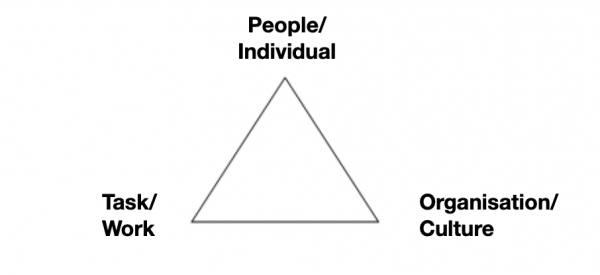Tech Coatings has been an eager observer of the dynamics in the passive fire protection sector for the past four years, and in particular passive fire protective coatings. We believe that the sector is now on the brink of becoming a stand-alone trade, yet we still need to see the advancement of yet insufficiently matured factors of the industry, which is crucial to establish a reliable structure for the future.
On this account, 2.5 years ago, the Fire Protection Association of New Zealand and a committed group of professionals, from within industry, came together for a unique collaboration: To agree on a broad set of rules for the passive fire protection industry — a Code of Practice for the specification and application of intumescent coatings on structural steel.
Establishing such codes is an essential first step, showing shared values and a collective understanding are the backbone of any well-functioning trade, and they offer the chance to reduce uncertainty and lead to stability of expectations.
Developed “by the industry for the industry,” such codes not only have immense value as an internal tool but also as an external statement of commitment. A well-written code clarifies a mission, values, and principles, linking them with standards of professional conduct.
The code is a mere descriptive tool, a written behavioural guide that calls for certain actions and standards of workmanship. But it is an empty framework if the people it is written for do not live it.
The central premise is that significant regime change depends on fundamental changes to how the industry has traditionally thought and acted.
These include: the beliefs and values of both the regulators and those who are regulated; the rules of thumb that people use to make decisions when faced with complex and uncertain information; the norms and rules that have developed to govern interactions, and to react to non-compliant behaviours.
Simply making members aware of the requirements will therefore not lead to compliance and the intended positive impact. So how can we ensure these guidelines to be compliantly implemented in the industry?
Compliance influencing factors
To support an effective, everyday-life implementation, we need to investigate factors which are influencing the compliance behaviour of people, most importantly into the barriers we face when implementing a new regime.
Significant barriers can often be found in major monetary investment, for example, substantial changes to internal processes (ISO 9001 QMS (Quality Management System)) or the requirement for acquisition of new tools — the higher the resource investment, the higher the barrier.
Often these economic factors are regarded as the most viable reason for failing compliance, but we think that the root cause for non-compliance lies in a separate set of factors, which are often overseen: Human Factors.
Human factors can be summarised as characteristics of the people, the work, and the organisation that significantly influence human performance or to put it simply: Our actions are shaped by the context they occur in.

Analysing the context will help us to understand why people act the way they do. Acknowledging and proactively managing these human factors will be more effective than simply telling people to ‘comply with the rules’ and it will make it easier for them to do the work the right way, increase productivity, and enhance safety and comfort.
For the successful application of the human factors concept, the three elements cannot be considered in isolation. We have therefore created a three-part series of articles that will investigate each factor in more detail, starting with a focus on the People/Individual.
The individual or people factor
Considering people factors means looking specifically into characteristics which describe the capabilities and limitations of individuals.
Factors that are of relevance include (but are not limited to)
- Personality
- Culture
- Competence
- Habits
- Attitude
- Physical and psychological health
- Fitness
- Motivation
- Risk perception
These factors influence behaviour and human performance in complex ways and are relevant on any level in a work setting.
Some characteristics such as personality are fixed; others such as skills and attitudes may be changed or enhanced. Depending on the quality of the trait, the way to factor them into a supportive environment might look quite different.
We want to investigate how these factors play out in real life — in our daily work in the passive fire industry — and want to suggest a way to improve the reliability of human performance.
People factors in the passive fire industry
First, we want to stipulate that most of the people we meet want to comply and are motivated to change their behaviour to what is expected of them. Nonetheless, this is not always enough to also achieve the desired behavioural change.
Competence is a context-specific quality, and as such is a crucial aspect to perform a job compliantly. This is especially important in high-risk industries (e.g., Passive Fire Protection) as we need to trust the people are executing the job well, efficiently, and safely.
As there is no apprenticeship or mandated training for people to work within passive fire protection, the skill levels we see vary widely. Workers are often not suitably qualified and lack abilities as well as knowledge and they will require more experience or specific training to work compliantly.
We also see cultural aspects play a vital role in assuring compliant behaviour in the passive fire industry. Communication, attitude, and risk perception can be highly influenced by someone's upbringing and constitute significant barriers, especially where language skills are essential for comprehension. We want to raise awareness that, for example, accounting for cross-cultural differences in communication styles bears a huge potential for better compliance.
Habits frequently get in the way of executing new desired behaviours and as our brain supports current behaviour, people will perform automated, unconscious behaviours the same way, every single time — especially if they are in the same environment. Therefore, old habits are often persistent, and we are unconsciously incompetent of new behaviours.
Insufficient communication is one of these habits which we encounter daily. There are countless reasons for poor communication, e.g. losing non-verbal cues when texting or emailing, misinterpretations of messages, insufficient details or oversharing, not knowing what to communicate, when and to whom, indirect communication, assuming other people know what we mean.
The fact that we can misinterpret information and situations despite the best of intentions is one of the main reasons that our decisions and actions can be flawed, resulting in making unconscious mistakes — regardless of experience level, intelligence, motivation, or vigilance.
When we factor in the above, we start to integrate a way of thinking that is person-centred, accounting for people’s specific challenges when designing job tasks, procedures, and training.
So how can we set up people to succeed?
The ultimate goal, of good human factors design, is to accommodate all the users in the system, especially those that do not work under the perfect conditions. This means not just thinking about design issues, as though the task was to be accomplished only by a calm, rested experienced applicator, but also for an inexperienced worker who might be stressed, fatigued, and rushing.
Unfortunately, a lot of the time we see the behaviours of individual employees as the only reason for why compliance is not achieved. We are quick to judge, that we need to manage a certain person’s behaviour to mitigate compliance issues.
An approach that focuses simply on changing the behaviour of workers by telling them what to do is not sustainable, and non-compliance will continue as it is a simplistic approach that ignores other wider issues.
To install confidence in the sector we need competent people, people with skills and capabilities that are willing and able to take the responsibility for their actions.
In our next article we want to look further into the organisation and how leadership and the hierarchy of control can help us mitigate non-compliant behaviour.




























 Most Popular
Most Popular Popular Products
Popular Products


